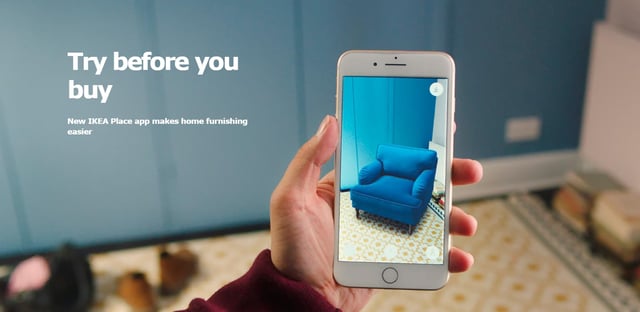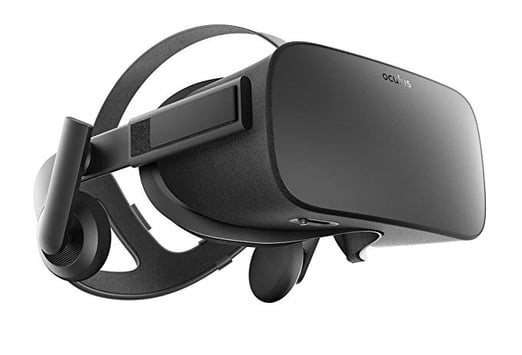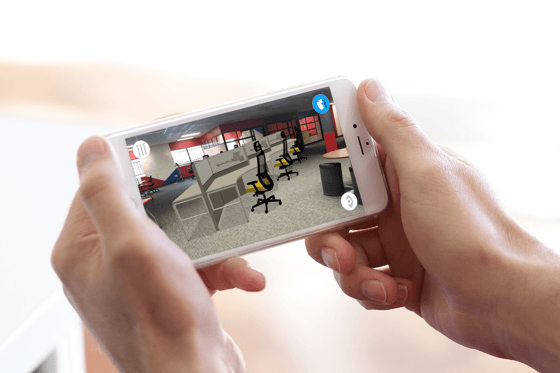Technology has become a part of our everyday lives, forever changing the way we work, learn, and connect with others. From the smartphones we carry in our pockets to the tablets we use on the daily, technology has empowered the workforce with the tools to work remotely, and access information instantly.
In the past 5 years, technology has advanced at such a pace to produce innovative solutions that incorporate the digital into our reality. During that time, many digital reality technologies like Augmented Reality (AR) and Virtual Reality (VR) were being introduced to consumers.
Back in 2014, IKEA’s catalog incorporated AR capabilities, allowing customers to place digital furniture into their home. This not only showcased IKEA being a forward-thinking industry leader, but it also answered one of their customer’s biggest barriers - not being able to see how the piece fits in their space.

In 2016, Oculus, a VR hardware retailer, released their first VR headset called the Oculus Rift, which dramatically shifted the VR landscape. Before the Rift, the only VR headset options were either lacking in quality or were too expensive for a regular consumer to purchase. After its release, and with new VR companies entering the market, you can now purchase the rig at a fraction of the cost.

Now in 2019, AR and VR have become incredibly sophisticated and user-friendly, a perfect tool for tech-savvy individuals or first-time digital reality users. Numerous dealers and manufacturers are adopting the new tech, recognizing the value it brings to their business’ - namely refreshing aspects of their sales process. Industry leaders have recognized that consumers are beginning to become unresponsive to traditional marketing and sales techniques, seeking new and innovative ways to attract potential clients.
But what exactly is AR and VR? Let’s explore what the technologies are, their differences, and how you can utilize them into your sales team.
Augmented Reality (AR)
In its simplest form, AR allows you to overlay a computer-generated element into a real-world environment.
Using AR allows you to enhance your current environment with digital objects. There are different ways you can use AR -- the two largest options via your smartphone or with AR glasses. AR glasses are a piece of hardware that projects digital content onto the glasses. Although this is an immersive way of experiencing AR 24/7, the hardware has not reached a point of being both subtle and refined as of yet.
The simplest and most cost-effective option to experience AR is through a mobile device. Fortunately, we are living in a time where there are numerous AR apps that are completely free and still allow you to have a great AR experience. Plus, the latest smartphones have a built-in ARCore meaning you won’t have to run any extra installations for the necessary components for running AR apps. Using AR through your mobile device is the most affordable and convenient option currently on the market.

Virtual Reality (VR)
VR is a completely immersive experience that takes the viewer into a virtual environment.
This experience does require extra hardware for the full VR simulation, and there are two different kinds: tethered or standalone. Tethered VR headsets need to be connected to an external PC that can support the headset. Standalone headsets do not have to be connected to a PC in order to use it, however, it does need to be charged.
Although it may seem less convenient than AR, there are solutions that allow you to still take VR with you on the go. Similarly to AR, there are VR apps that allow you to access it on your mobile device. And although you still do need a piece of VR hardware to have the full experience, there are many cost-effective solutions like the Google Cardboard or Homidos that are inexpensive and compact.
.jpg?width=528&name=GoogleHeadset_KITSXR%20(2).jpg)
So What’s the Difference Between AR and VR?
Although both AR and VR fall under the digital reality umbrella, they achieve two completely different effects.
On one hand, AR allows you to see a digital object in the environment you are currently in. This is especially helpful if you’re curious to see whether an object fits into a current environment. Plus, it allows you to ‘test’ out the object in your space in real-time.
On the other hand, VR completely immerses you in a virtual environment, meaning it will transport you into a completely different space. This could include giving a tour around a place that already exists, or a glimpse into a project that is still in the planning stages.
The biggest difference between the two technologies is one will overlay an object in your current environment, and the other will take you into a virtual space.
So Where do I Start?
New technology doesn’t have to be scary or radically expensive. In fact, both AR and VR have progressed to become more user-friendly, accessible, and affordable than ever before. And both technologies have a place in your sales team.
Augmented and virtual reality is the next phase in visual storytelling, allowing you to build an effective line of communication between your sales team and their clients. Rather than presenting your proposal with static, 2D renderings, allow clients to interact and experience their new space with AR/VR. The most popular way to use AR in your business is to show individual pieces of furniture in your client’s space. As we touched on previously, it allows your client to test drive options in their own space to see whether it matches their vision. Not only does this give your client’s a clearer understanding of what the furniture will look like in their space, but it can help them feel more confident in their selection and speed up the decision-making process.
If your client wants to do a complete refurnishing of a space, use VR to propose your various configuration ideas. The beauty of immersing yourself in VR is how it can breathe life into your vision to experience it for yourself. When your clients can see their vision come to life in VR, they can begin to imagine themselves coming to work in the space every day and build an emotional connection to it.
Both AR and VR have the potential to enhance your dealership’s sales process by making any presentation both effective and efficient. This can help your salespeople get to closing the sale quicker without taking any shortcuts. Utilize both AR and VR to engage with your clients in a new and innovative way, answering to their ever-changing expectations.
It’s time to get started and join in the next phase of visual storytelling. Experience for yourself how your business can be transformed by integrating AR and VR into the sales process.
The KITS collaborator™ - Mobile Sales Platform was developed to meet the needs of today's office furniture sales professional. For more information about the KITS collaborator and all of its features, check out our product tour page here. To learn more about the digital reality functions on the KITS collaborator XRPro Edition, click here.


